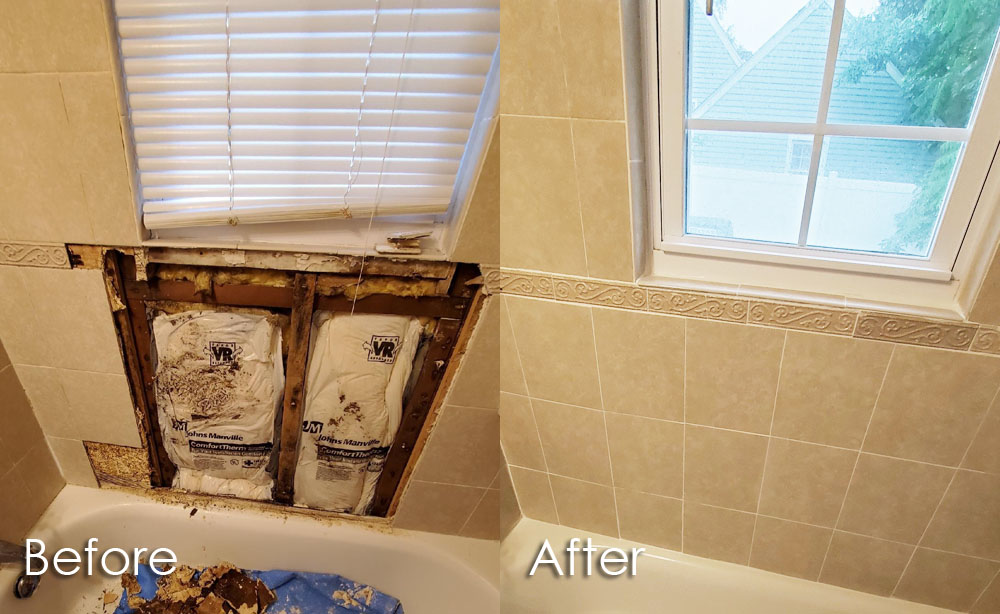Just How to Avoid Bathroom Water Damage
Just How to Avoid Bathroom Water Damage
Blog Article
They are making several good annotation related to How to Fix a Water Damage Bathroom as a whole in the article beneath.

The shower room is extremely susceptible for wet build-up as well as potential water damages because of the frequent use water in it. This short article supplies basic evaluation techniques to aid finding water damage threats.
The regular use of water in the bathroom makes it exceptionally susceptible for wet build-up and possible water damages. By inspecting it consistently, you can reduce water relevant damages.
The following collection of evaluations is very easy to do and must be done once in every 3 months in order to keep your bathroom healthy and to avoid possible water damages brought on by the bathtub, the shower, pipeline joints and plumbing, sinks, cupboards, and also the toilet
Do not disregard performing these assessments and also be comprehensive while doing them. Remember that these easy assessments can save you a lot of money by giving very early indications for water damages
Bath tub and Shower
The shower as well as bath tub require special interest and also maintenance. Inspect the floor tiles and also replace if broken. Make certain that there is no missing out on grout between the ceramic tiles. Check and change cracked caulking at joints where the walls fulfill the floor or the tub. Obstructed drains as well as pipelines problems will stop the bath tub from drying as well as might indicate major troubles beneath the tub. Talk to a specialist instantly to avoid architectural damage. Take note of stainings or soft locations around the bathtub walls as they may suggest an inner leak.
Plumbing
Signs for water damage are difficult to find given that most pipes are set up inside the wall surfaces.
Pay unique focus to flooring and walls wetness and also discolorations as they might indicate an unnoticeable plumbing issue. Inspect dampness degrees in adjacent areas as well.
Sinks and Cabinets
Sinks and cupboards are subjected to wetness as well as moisture day-to-day and also are often overlooked. Inspect routinely under the sink as well as on the counter top above it. Repair any type of drip in the catch as it may suggest drain problems. Look around the sink, slow draining pipes may indicate a blocked drainpipe. Replace sink seals if they are cracked or loose.
The Toilet
The toilet is a vulnerable water junction. Check the water lines and look for leakages around the commode seat, in the tube, and also under the water storage tank. If you find any type of indications of wetness on the floor around the toilet, check for leakages in the toilet edge as well as storage tank seals.
Understand that hanging toilet bowl antiperspirants raises the opportunities for blockages.
Water Damage Signs In The Bathroom To Avoid Cleanup
Musty smell
This is one of the easiest signs to catch because musty smells are so odorous. The damp, earthy, moldy smell should be a big red flag. The smell will develop when moisture gets trapped in surfaces, and begins to facilitate mold growth. Leaking pipes under cabinets, inside walls, and behind shower fixtures will cause moisture to stay trapped and not dry, which will lead to mold growth and spread. As soon as you notice any musty smells in your bathroom, have it checked for hidden water damage and cleanup signs.
Visible mold
If the smell isn’t there to give it away, sometimes you will actually see mold growth. Finding mold in your bathroom is a serious problem, because mold is very harmful to your health. By the time mold growth is visible, it also means that water damage has already occurred and been present for some time. The only way the mold problem can be resolved is to find the source of the moisture and get it stopped. To safely and adequately remove mold, you need to have professionals handle the remediation. Do not waste any time in getting mold problems addressed, fixed, and sanitized so that you can protect you and your family from the many respiratory symptoms caused by mold exposure.
Damaged floors
Bathroom floors should be able to withstand some exposure to water while still remaining in good condition. However, when excess exposure or water leaks occur, they will begin to damage even the most water-resistant flooring. If you notice any cracking, bubbling, staining, or warping on your bathroom floors, there is probably a water leak somewhere causing the distortion. If you notice areas of the floor have become softer, or even have a spongy feeling, there is probably damage to the subfloor. Subflooring is typically made up of plywood. When plywood is exposed to water or moisture, it will absorb it. Once it has become saturated, the weight of the excess water will cause the wood to swell and soften. Check the floors in your bathroom frequently to catch any of these sings before they lead to damaged subflooring.
Changes on walls
When water leaks behind walls, it will cause changes in the drywall. Peeling plaster, blistering paint, and soggy wallpaper are all good indicators that excess water is building up behind the wall. Water leaking behind drywall will cause it to swell and be soft to the tough. If you start to notice gaps along the trim of your walls, or where tile meets the wall, it could also be a strong indicator that there is a leak behind the wall. Any changes, distortion, or damage on the walls should be evaluated as soon as you notice it to prevent further water damage and cleanup.

We are very inquisitive about How to Fix a Water Damage Bathroom and I hope you liked the new page. Loved our blog posting? Please share it. Help other people locate it. I am grateful for your time. Visit us again soon.
Schedule An Appointment Report this page